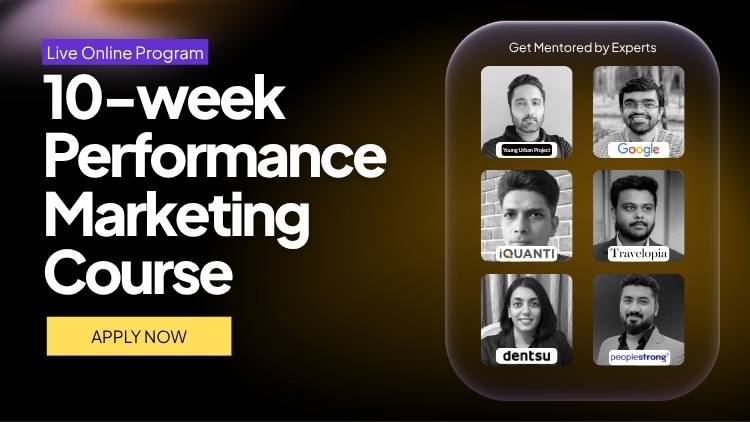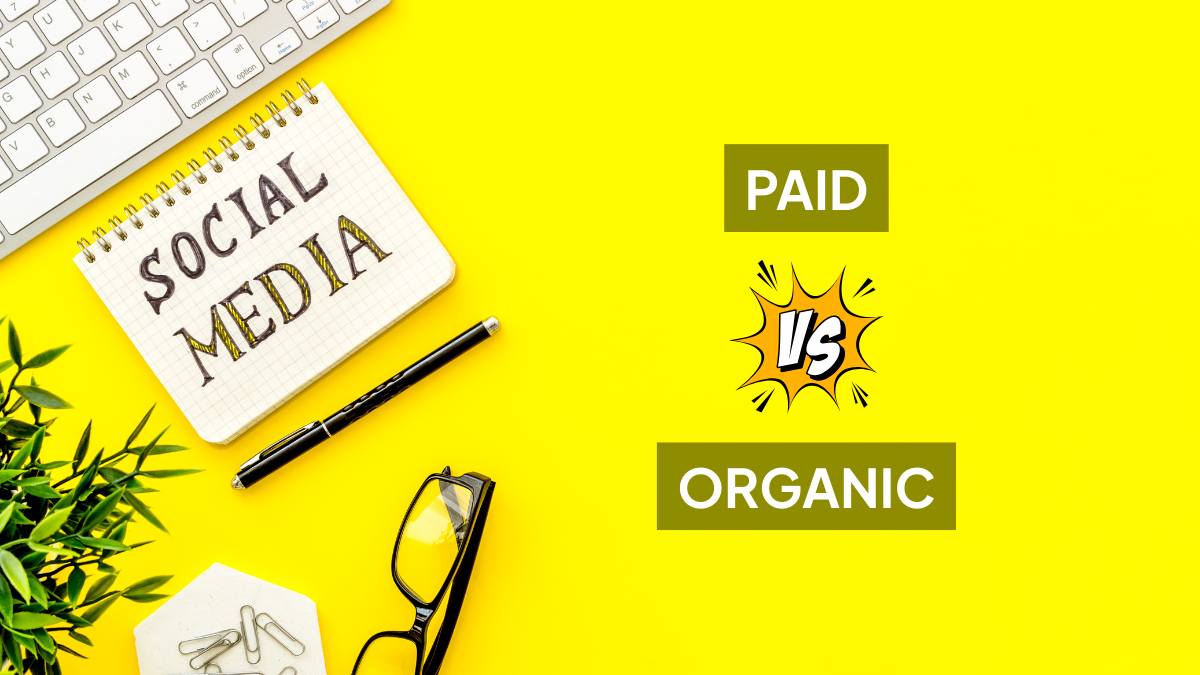Table of Contents
Introduction
Organic social media is basically what you post without putting money behind it – your regular posts, stories, reels, even the funny meme you throw up on a Friday afternoon. Paid social is when you tell the platform, “Here’s some cash, show this to the exact type of people I want.”
This comparison matters more now than it did even a couple years ago. Feeds are busier, attention spans are shorter, and the algorithm is… well, picky. Even if you’ve got a big audience, only a slice of them will see your posts unless something about them clicks hard with the algorithm. Paid ads let you skip that wait and land right in front of people, but it’s not a magic button. It costs, it needs testing, and it’s easy to get wrong.
The reality is – both play by the platform’s rules. Algorithms decide who sees what, and they reward content that keeps people scrolling. Paid just lets you nudge your way to the front of the line.
What is Organic Social Media Marketing?
Organic marketing is the slow burn. You’re showing up regularly, building a vibe, and talking to people who care about what you do. No budget is needed for the post itself – just your time and creativity. It could be a quick tip, a story from your day, a product demo, or answering questions in the comments.
Things that work well here:
- Posting on a schedule your audience can rely on
- Replying to comments like you would in a real conversation
- Using hashtags in a way that actually makes sense for your content
- Partnering with other brands or creators so you tap into their audience too
The brands that win organically usually do it by becoming part of someone’s daily scroll – they’re relatable, they’re consistent, and they don’t just show up to sell.
Also Read: Benefits of Social Media for Business
Benefits of Organic Social Media
The biggest thing organic gives you is trust. People can tell when you’re showing up because you want to connect versus when you’re paying to be in their feed. It feels more genuine, and over time, that builds loyalty.
Some upsides worth noting:
- Authenticity: You’re not forcing your way into someone’s feed with an ad.
- Community: It’s easier to build actual back-and-forth with your audience.
- Storytelling: Organic posts are great for sharing your journey, not just your products.
- Budget-friendly: If you’ve got more time than money, organic is your best friend.
- Word-of-mouth: People share stuff they love, and that’s free marketing.
It’s not instant, and it’s not effortless, but if you stick with it, organic can become the foundation that makes all your other marketing work better.
Also Read: What is Social Media Optimization?
Challenges of Organic Social Media
Organic can work wonders, but it’s not without its roadblocks. The biggest issue is reach. Algorithms often decide your post’s fate before most of your audience even sees it. That means even great content can end up under the radar.
Some of the main challenges:
- Limited reach: Platforms show posts to only a small percentage of followers.
- Slow growth: Without a base audience, it can take months to gain traction.
- Hard-to-measure ROI: It’s tricky to connect posts directly to sales or revenue.
- Time-heavy: Requires consistent posting, engagement, and community building.
Organic pays off in the long run, but it’s definitely a game of patience and persistence.
Also Read: Best Social Media Monitoring Tools
What is Paid Social Media Advertising?
Paid social is when you give the platform a budget and tell it who you want to reach. That could be running a full-blown ad campaign, boosting a single post, or retargeting people who’ve visited your site. The main goal? Get your content in front of the right audience, fast.
Platforms like Instagram, Facebook, TikTok, and LinkedIn all have their own ad systems. You set the targeting, choose the ad format, decide how long it runs, and track the results.
Some popular formats include:
- Carousel ads: multiple images or videos in one swipeable post
- Video ads: short attention-grabbing clips or longer promos
- Lead form ads: collect sign-ups without leaving the app
- Story ads: full-screen placements between user stories
It’s the go-to for brands that need quick visibility – whether for a new launch, a limited-time sale, or just to scale faster.
Benefits of Paid Social Media
If organic is the slow burn, paid is the fast track. It lets you put your message in front of the right people almost instantly, and with incredible precision. You’re not leaving it up to chance or the algorithm – you decide who sees your content.
Some clear advantages:
- Immediate reach: Get in front of thousands in hours, not weeks.
- Targeted audience: Narrow by location, age, interests, and behaviors.
- Measurable results: Detailed data on clicks, conversions, and costs.
- Supports sales directly: Perfect for lead gen, product launches, or promos.
- Flexible formats: Match ad style to the platform for better engagement.
When speed and accuracy matter, paid campaigns can deliver in a way organic simply can’t.
Challenges of Paid Social Media
Paid social can be powerful, but it comes with strings attached. It’s not just about setting a budget – it’s about constant tweaking to keep performance from sliding.
Some common pitfalls:
- Requires ongoing budget: Stop paying, and results stop too.
- Ad fatigue: Audiences get bored if the creative isn’t updated often.
- High competition: Busy seasons drive costs up across industries.
- Risk of poor ROI: Wrong targeting or weak creative wastes money fast.
Paid works best when it’s strategic, regularly updated, and backed by solid creative – otherwise, it can become a quick way to burn through budget.
Also Read: Email Marketing vs Social Media Marketing
Paid vs Organic Social Media
| Aspect | Paid Social Media | Organic Social Media |
| Reach | Instant exposure to a targeted audience, regardless of whether they follow you. | Grows gradually through followers, shares, and algorithm boosts. |
| Cost | Requires a set budget – daily, lifetime, or campaign-based. | No direct spend on placement, but costs time and effort to create consistently. |
| Speed of Results | Fast – can drive traffic, leads, or sales within hours of launch. | Slow – takes weeks or months to build momentum and see noticeable results. |
| Engagement Quality | Higher visibility but often more surface-level interaction. | Usually deeper, more genuine engagement from people who follow by choice. |
| Control Over Targeting | Precise targeting by location, interests, demographics, and behaviors. | Relies on algorithms and existing followers to distribute content. |
| Best for | Product launches, seasonal sales, lead generation, brand awareness in new markets. | Building trust, community engagement, long-term brand presence. |
| Longevity of Impact | Ends when the budget runs out unless you keep spending. | Content can continue to bring engagement for weeks or even months after posting. |

Enroll Now: AI-Powered Performance Marketing Course
When to Prioritize Organic Over Paid (and Vice Versa)
There’s no single right answer here. Some days organic is the best move. Other days, you’d be better off just running an ad. It depends on what you’re trying to do.
Go organic when:
- You’re still building your reputation and need people to trust you before they buy.
- You want an actual community around your brand, not just clicks.
- You’ve got time on your hands but not a big ad budget.
- You’re playing the long game and aren’t in a rush for results.
Go paid when:
- You’re launching something new and don’t have time to wait for reach.
- You’ve got a short-term offer that needs eyeballs now.
- You’re testing a new audience or market.
- You have a very specific goal, and you want to track the results down to the last click.
Most brands will bounce between the two – and honestly, the sweet spot is usually somewhere in the middle.
Also Read: Social Media Marketing Strategy
How to Combine Paid and Organic Social Media for Best Results
The smartest brands don’t treat paid and organic like rivals. They use them together so one feeds the other.
Here’s what that can look like:
- Take an organic post that’s already doing well and throw a little budget behind it to see how far it can go.
- Use ads to send people straight to your profile, where your organic content seals the deal.
- Retarget people with ads after they’ve interacted with your organic posts – they already know you, so they’re more likely to click.
- Keep a single calendar that shows both your organic posts and your ads so everything feels connected.
When you combine them, you’re not just chasing clicks – you’re building a brand people actually remember.
Also Read: Performance Marketing vs Paid Advertising
Managing Paid and Organic Social Media Efficiently
Running both paid and organic can get messy if you’re not paying attention. It’s easy to post a bunch one week and then vanish for the next two, or spend half your ad budget in a few days without realizing it.
Here are a few things that help keep it under control:
- Use a scheduling tool so you’re not glued to your phone. Buffer, Hootsuite, Meta’s built-in tools – whatever you’ll actually stick to.
- Set separate goals. Paid might be about leads or sales, while organic is about community and engagement.
- Decide your ad budget ahead of time so you’re not guessing mid-month.
- If you’re short on time or just don’t enjoy it, get help. A freelancer, agency, or part-time social media manager can keep things moving.
A simple plan makes all the difference. Without it, social media will eat up way more of your day than it should.
Conclusion
Paid and organic aren’t really in competition – they just do different jobs. Organic takes time, but it’s how you build trust and get people to stick around. Paid is fast and can put you in front of the right people today, but it only works as long as you’re spending.
The best results come when you use them together. Let organic be your foundation and your voice, and use paid to give it a push when you need to move quickly. Keep testing, keep tweaking, and don’t get too comfortable – the platforms change, and so should your approach.
FAQs: Paid vs Organic Social Media
Is organic social media still effective in 2025?
It still works, but you’ve got to be patient. Growth is slower now, and the algorithm isn’t doing anyone favors. If you keep showing up and posting stuff people actually care about, you can still build a loyal crowd.
How much budget should I allocate to paid social media?
There’s no magic number. Start with an amount you’re fine losing while you figure things out. Test a few ads, see what clicks, then put more money into the ones that are clearly paying off.
Which platforms work best for organic growth?
Depends who you’re trying to reach. Instagram and TikTok are great if you’ve got strong visuals. LinkedIn works well for B2B and professional content. YouTube’s the place if you’re up for creating longer videos.
Can I run paid ads without an organic presence?
You could, but it’s not the smartest move. If someone clicks your ad and finds a dead or empty profile, they’ll bounce. Even a few fresh posts can make you look legit and build trust.
How do I measure ROI for both paid and organic social?
Paid is easy – the ad manager shows you clicks, leads, and sales. Organic’s more about looking at patterns over time: engagement, traffic spikes, and whether those moments lead to more sales or sign-ups.

